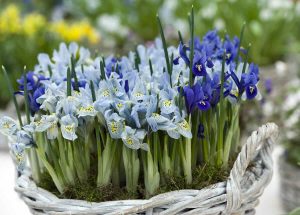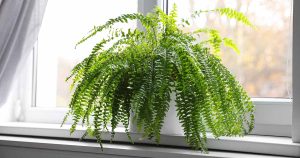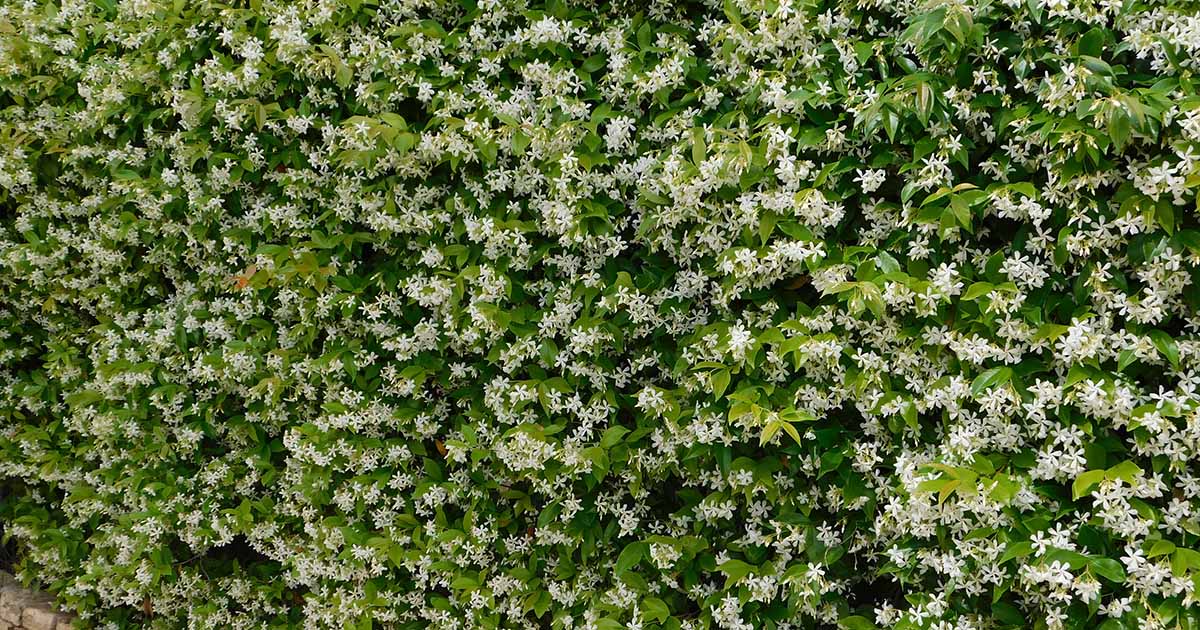
Star jasmine, Trachelospermum jasminoides, is a woody, perennial, non-clinging vine for USDA Hardiness Zones 8 to 10 with glossy green foliage and sweetly fragrant, star-shaped blossoms from spring to summer.
Gardeners enjoy it in several ways, including as a spreading ground cover, vertical climber, or pruned into a shrublike form.
If you grow these plants outside of their preferred Zones, you can pot them and bring them indoors for the winter.

We link to vendors to help you find relevant products. If you buy from one of our links, we may earn a commission.
Our guide to growing star jasmine discusses all you need to know to grow this plant in your outdoor living space.
This article examines star jasmine’s suitability for cultivation as a landscape hedge.
Here’s what we’ll cover:
Let’s jump right in!
What Makes a Good Hedge?
A hedge consists of multiple shrubs planted in close proximity that intermingle to form a continuous whole, creating a barrier and defining a garden or property perimeter.
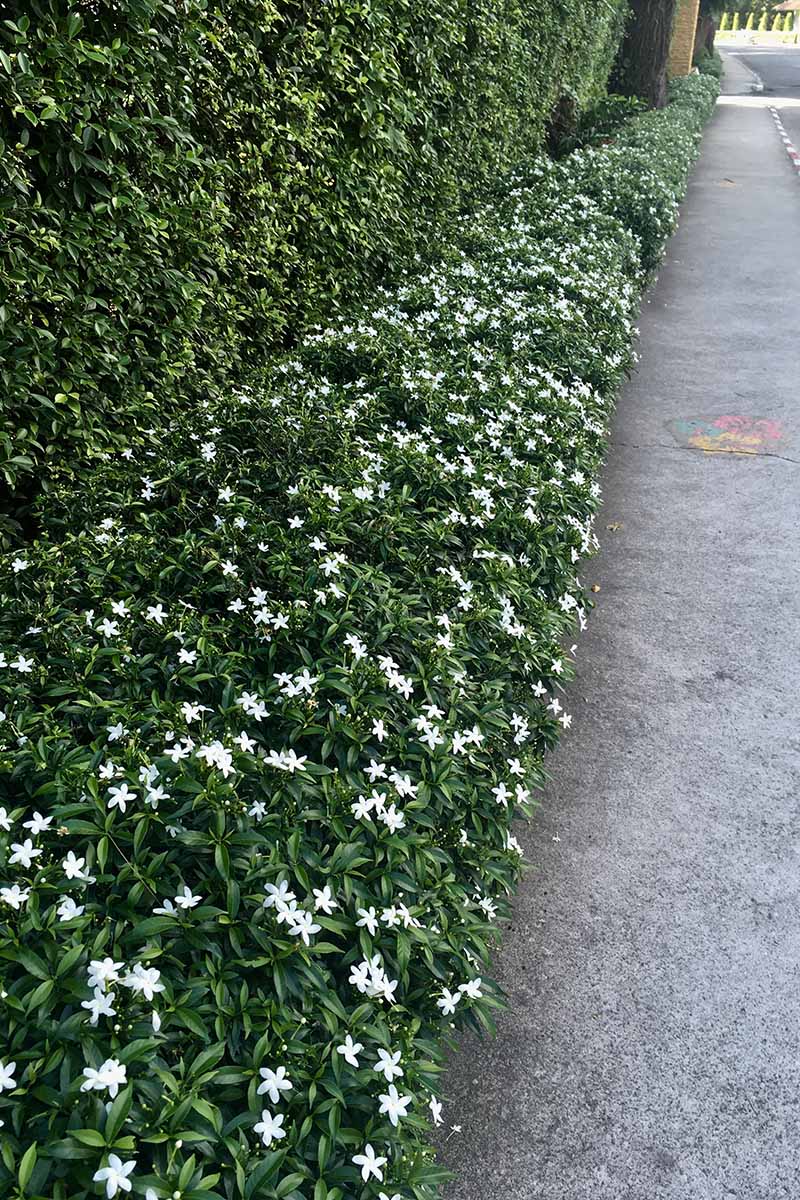
Ideally, it is:
- Adorned with seasonal interest, like spring flowers or autumn berries
- Dense
- Evergreen
- Fast growing
- Long-lived
- Tolerant of regular trimming
Heights and styles can vary. Some are clipped into crisp, geometric forms, while others are loose and informal.
T. jasminoides meets all of the above qualifications, but because it is a vine, you may wonder if it’s sturdy enough to be grown as a hedge.
The answer is yes, provided you start pruning the day you plant. You can shape your star jasmine into a small, two- to three-feet-tall fragrant hedge with a bit of careful trimming.
Here’s how!
Cultivating Star Jasmine as a Hedge
Plant star jasmine in the spring or early fall. The ideal setting has full sun to part shade, although deep shade is well tolerated.
The soil should be organically rich, well-draining loam with a slightly acidic pH of 5.5 to 6.5.
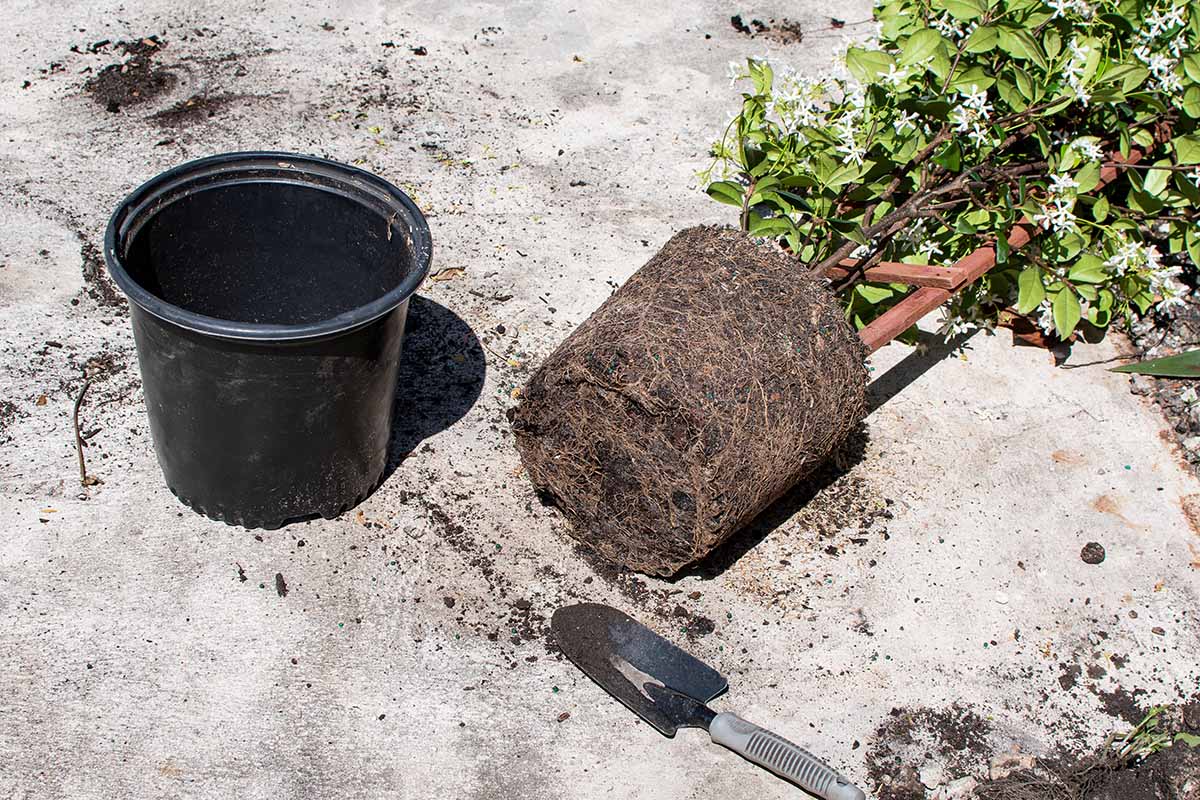
Decide the length of the hedge you want and place a marker every three to five feet to determine how many plants to buy.
There should be at least three to five feet behind and in front of the flora to accommodate mature dimensions and facilitate trimming.
Water the nursery pots about an hour before planting to minimize transplant shock.
Dig a hole as deep as the pot and twice as wide for each plant, working the soil to a crumbly consistency and removing debris.
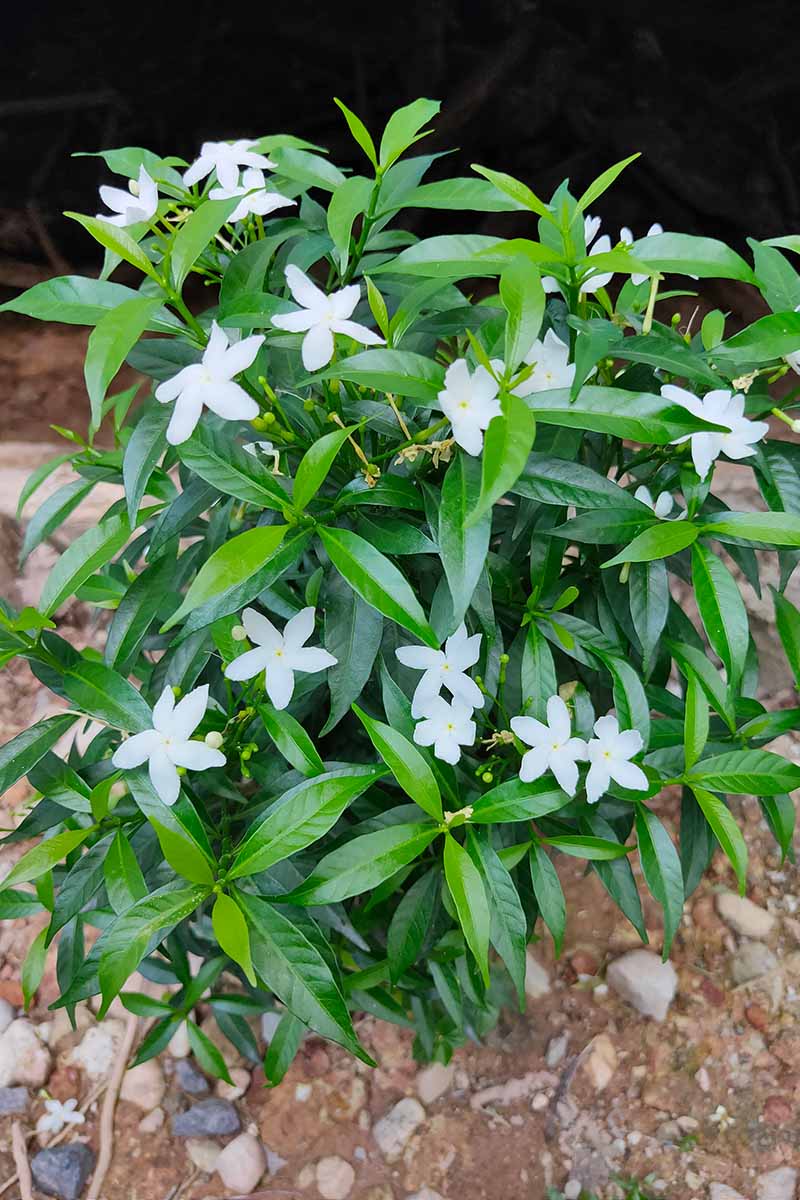
Mixing in a few handfuls of compost and horticultural sand improves soil fertility and drainage. Adding one to two tablespoons of bone meal jumpstarts root establishment.
The proper depth for planting is to set the crown about an inch below the soil surface, as it was in the original container, followed by backfilling and tamping to secure it in place.
Add a two to three-inch layer of mulch to aid in moisture retention.
It’s best to keep the soil moist during the first growing season. After that, provide supplemental water if it doesn’t rain and the top two inches of soil are dry. Established plants have good drought tolerance.
Each spring and just after blooming in early summer, T. jasminoides benefits from an application of a well-balanced, slow-release fertilizer. A 10-10-10 N-P-K ratio is appropriate.
When and How to Prune
Pruning curbs growth to keep flora manageable, direct it in a desired fashion, rejuvenate, and remove damaged or dead foliage.
Because star jasmine blooms on old wood, we can cut back new foliage in late winter to early spring. We can also trim right after blooming in early summer.

When cutting stems, wear gloves to avoid contact with the toxic white sap.
Sanitize pruners in a solution of one part bleach to nine parts water, rinse, and dry. As you trim, you may find the blades impaired by the sticky residue and have to stop and sanitize them again.
Place tarps or plastic trash bags on the ground to collect the cuttings.
When growing star jasmine as a hedge, pruning begins on planting day. Once in the ground, use clean pruners to shorten all stems to about six inches tall. Make all cuts just above a leaf node to encourage regrowth.
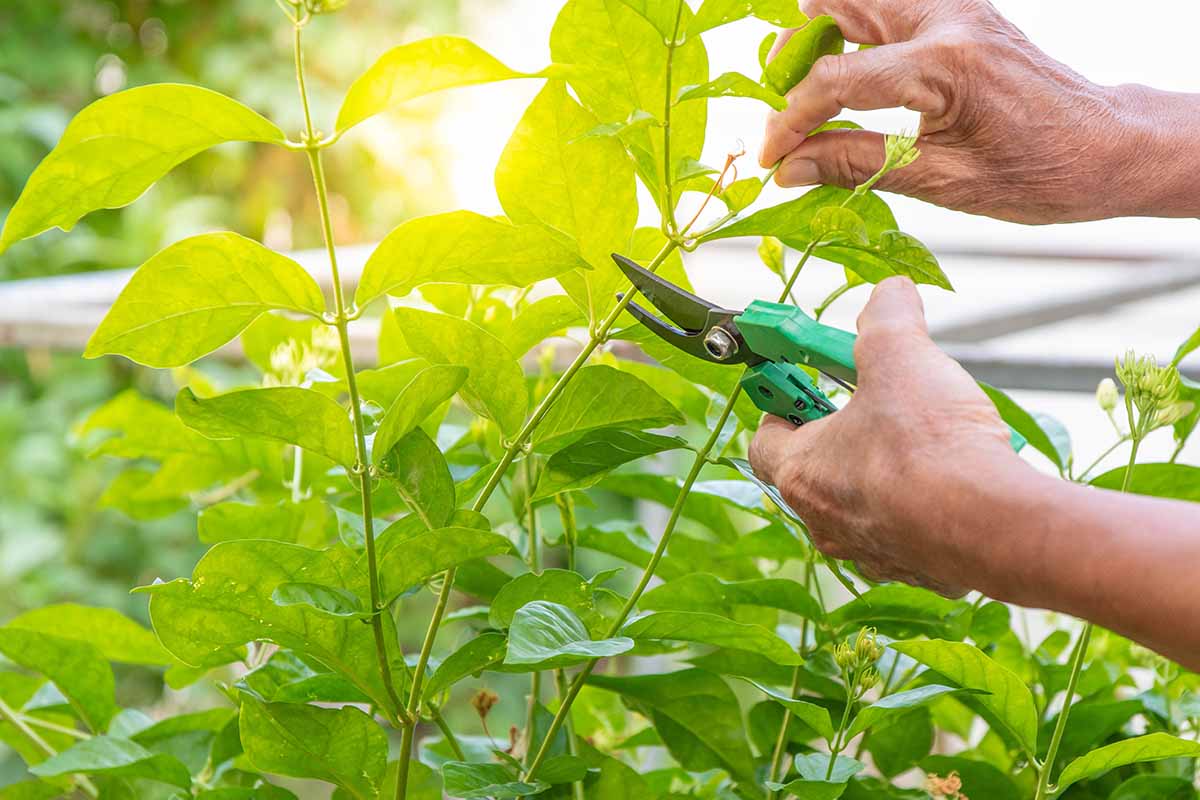
This deep initial trimming promotes lateral branching off the main stems and dense foliage at the base of the soon-to-be shrub.
If you like, you can use the cuttings to propagate new plants. Re-cut the stems just below a leaf node to initiate root formation. You’ll find instructions in our guide to jasmine propagation.
During the establishment phase, prune twice a year, once in late winter to early spring and again after blooming.
Use pruners to remove half of each young green stem. Regular manual cutting of individual stems leads to more lateral branching and less trailing.
Avoid allowing stems to lengthen, or they will weigh heavily on those underneath and deprive them of light.
Some gardeners use support structures, like trellises or twine and stakes, to support the foliage during the establishment phase. However, with effective trimming to promote lateral branching, this should be unnecessary.
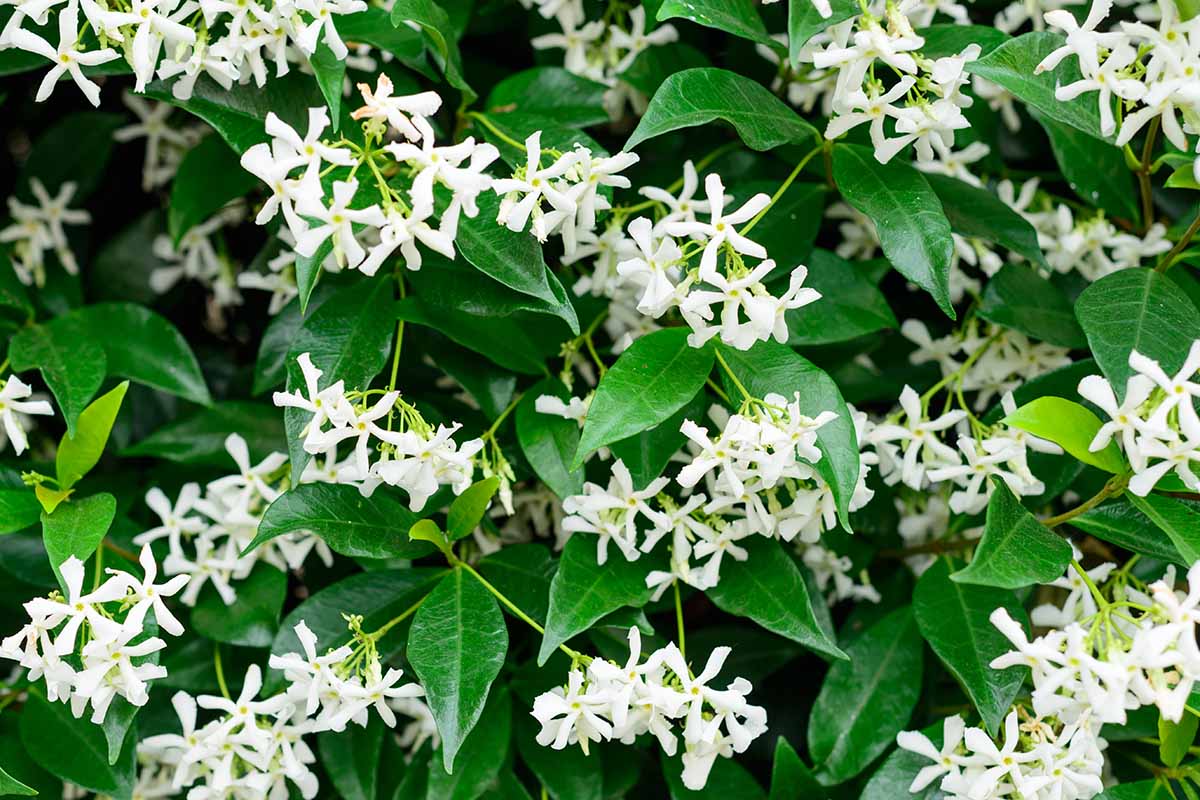
Gradually, your plants will resemble shrubs, and as they grow, they will merge. Once they form a hedge, you can move into the maintenance phase, in which you’ll trim once a year to curb trailing growth and preserve the compact form you have achieved.
Use sanitized loppers or electric hedge clippers to trim the top and sides, cutting multiple stems at once without regard for leaf node locations.
Here are two landscaper pro tips for maintaining an established hedge:
Use loppers or power clippers to cut mature hedges about six inches shorter than you want them to be to accommodate the next flush of new growth and – maybe – get away with one cutting a year. Cutting multiple stems at once creates a formal appearance.
Or, continue to trim the stems of fresh growth individually. Instead of cutting them flush with the old growth, cut them slightly below it to hide the chopped stem ends and foster a naturalistic, informal look.
In addition to pruners, loppers, and hedge clippers, you may need a pruning saw to remove dead woody stems. If possible, always make cuts above a bump in the bark, as this is a leaf node and a natural point of regrowth.
After pruning, apply an all-purpose, slow-release 10-10-10 fertilizer.
Our guide to pruning star jasmine has more details.
A Friendly and Fragrant Landscape Boundary
As a spreading ground cover, star jasmine grows to a height of about two feet and, when secured to a trellis or arbor, to lengths of 10 to 20 feet.
As a hedge, you can expect a low profile two to three feet tall, for a neighborly boundary above which you can chat with a friend.
Pruning to promote lateral branching curbs the vining behavior of T. jasminoides for self-supporting bushes that readily merge into a springtime fragrance extravaganza.
How does your jasmine grow? Please tell us in the comments section below.
If you found this article informative and want to learn more about cultivating jasmine, we recommend the following:
